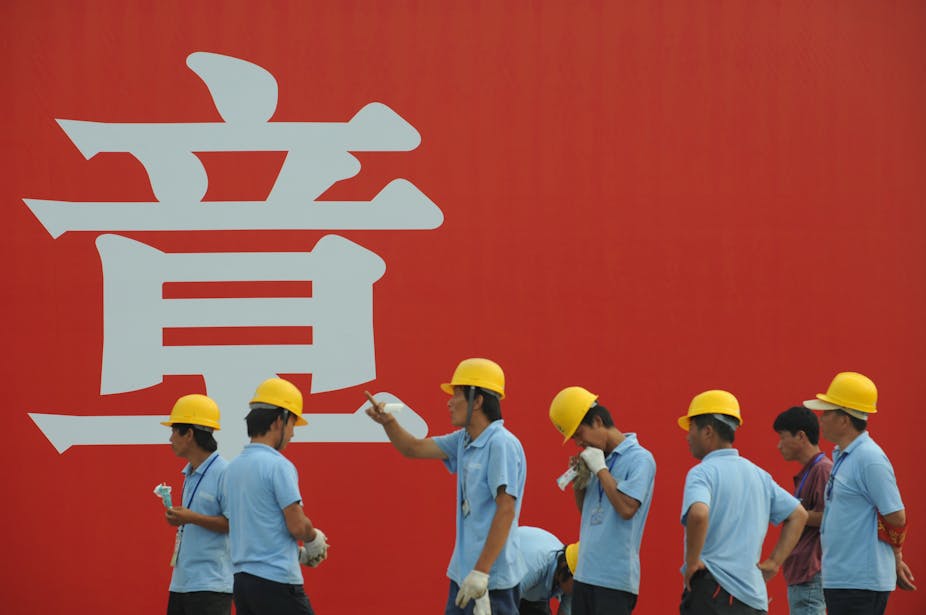Elected with a pledge to be the infrastructure prime minister, Tony Abbott has repeatedly promised to bring more private investment into high-priority infrastructure projects.
Last week’s Productivity Commission’s Public Infrastructure draft report was similarly bullish when it comes to leveraging the market to fund these projects.
However, nothing else could have been expected. The scope of the inquiry was already narrow, designed to address:
…the creation of revenue streams to attract private sector finance … and look(ing) for ways to achieve cost savings in the delivery of projects, particularly when using PPPs (public–private partnerships).
The PPP focus in the report was on a further suite of processes to prevent future projects from going awry. “High-quality analysis of the project parameters by appropriate experts employed by the government” was prescribed.
The report suggested that the outcomes from PPP infrastructure projects had been mixed.
PPPs can stimulate innovation and attract new technologies, argued the authors of the report. And despite a number of setbacks, savings in the delivery of PPPs could still be made.
The poor economic and democratic performance of PPPs and user-pays infrastructure systems have already been noted. Projects funded in this way often fail to deliver triple bottom line – social, economic and environmental – outcomes.
Sometimes, like in the case of Sydney’s Cross City and Lane Cove Tunnels, they suffer from low usage and insolvency.
The problem with the infrastructure report is not so much the recommendations but the scope and premise of the inquiry itself.
An economic “boom and crisis” historical circularity has become an important part of the public debate between public and private infrastructure funding in Australia.
The use of the Productivity Commission to evaluate these issues is itself a signal that Australia has shifted from thinking about infrastructure as underwriting collective social equality to one of competitive economic individualism.
And while Australia has been looking east, following the United States in pursuit of free-market solutions, it’s worth taking a look north to consider the infrastructure lessons from China and Singapore.
Social right or user-pays?
So strong is the belief in Western democratic institutions that to conceive of authoritarian governments producing better infrastructure outcomes is almost taboo.
But the Productivity Commission’s position that infrastructure should, in more cases, be provided on a user-pay basis rather than be a right of citizenship is brought sharply into focus by comparing Australian cities to Singapore and Beijing.
Of course there are dangers in the comparison. A replication of Singaporean or Chinese infrastructure governance systems would be impractical and undesirable.
Chinese planning authorities have certainly not taken a measured approach to infrastructure development. For example, China has an appalling track record on the preservation of cultural and material heritage.
Notwithstanding many concerns and caveats, a measured assessment of China’s urban planning achievements is insightful.
Beijing planners have a long-term infrastructure vision and the political backing to implement it. No less than six city master plans, covering 1950 to 2020, are open for inspection at the Beijing Planning Exhibition Hall.

With a booming population, authorities are moving fast to implement the long-term infrastructure vision, at times with little regard for the rights of poor inner-city residents or the preservation of historic buildings.
And mass transport infrastructure, which could eventually be the biggest in the world, is being delivered. The subway has a flat affordable fare of ¥2.00 (about AUS$0.40) for any stop in the city including the international airport.
The government is also set to build 20,000 new affordable housing dwellings to address the city’s housing infrastructure needs.
There are concerns, however, that these affordable housing dwellings will be on the outskirts of the city and might create a so-called “poverty ring” around the city.
Still, in 25 years Beijing will have one of the most extensive public transport systems in the world and an additional 200,000 new affordable housing dwellings.
Productive Singapore
Singapore may officially be a multiparty democracy, but the reality is a single party has governed the country since it was founded. And the government has strict controls on land-use planning for transport and housing construction.
About 85% of Singaporeans live in public housing provided by the Housing and Development Board. All residents are required to contribute to the Central Provident Fund, a compulsory savings fund for housing, healthcare and retirement.
But the provision of public housing is not without its problems. About 95% of all Housing and Development Board residents have purchased the flat they live in, which is putting pressure on housing affordability.
Singapore’s public transportation system is already well advanced. By 2015 a train will arrive every 2 minutes during peak times, 80% of homes will be within a 10-minute walk of a station. Three quarters of all peak hour journeys are forecast to be made using public transport.
The government has been described as a benevolent dictatorship, but Singapore has a progressive infrastructure vision built around public housing and a mass transport system. This infrastructure underwrites jobs and growth – 17% of Singapore’s 5 million citizens hold investable assets of over US$1 million.
The infrastructure end game
In 2030 Australians might not recall the 2014 infrastructure planning visions, Productivity Commission reports or government politicking, but they will be living the infrastructure outcomes.
Careful consideration needs to be given to the calibration of Australia’s infrastructure systems with the tools of economic rationalism and social democracy.
Insights from China and Singapore shed light on Australia’s infrastructure and democratic end game. But even state-led infrastructure development in China is an economic modernisation project rather than the continuation of social democratic ideals.
In 2030 Australia’s key regional partners in Asia will have progressive modern public infrastructure in their cities. This will further boost their economic growth and jobs. How will Australian’s cities compare in 2030?

